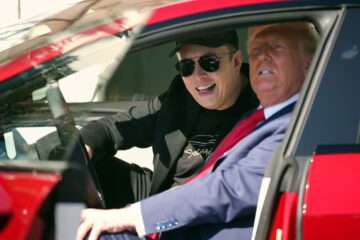Figure, the robotics company that in January entered into a commercial agreement to bolster BMW’s manufacturing process with its humanoid robots, announced Thursday that it has raised $675 million in a new funding round, granting the company a $2.6 billion valuation.
The company said it has received investments from Microsoft, OpenAI’s startup fund, Nvidia and Jeff Bezos, through Bezos Expeditions, in addition to several venture capital firms.
The announcement of the investment from these many facets of the Big Tech sector comes alongside a new agreement between Figure and OpenAI to develop next-generation artificial intelligence models for use in its humanoid robots.
Related: This legacy automaker took a leaf out of Tesla’s book, then beat Elon Musk to the punch
“The collaboration aims to help accelerate Figure’s commercial timeline by enhancing the capabilities of humanoid robots to process and reason from language,” Figure said in a statement.
Figure added that the investment will ramp up the company’s timeline for the development of its humanoid robots, and will be used for AI training, manufacturing, enhancing deployment efforts and hiring more engineers.
As part of its new collaborative partnerships, Figure said that it will use Microsoft Azure to power its AI infrastructure, training and storage.
Microsoft, having poured $13 billion into OpenAI, is OpenAI’s largest investor. The tech giant recently inked a new deal with French AI startup Mistral, worth about $16 million.
The European Commission is investigating both deals.
Related: Deepfake program shows scary and destructive side of AI technology
Figure robotics
Figure, which last year raised $70 million at a $400 million valuation, is working to realize its belief that humanoid robots have the capacity to vitally transform a number of businesses, including elderly care, labor and the construction of new worlds on other planets.
Figure’s first goal is to provide robotic labor for those areas that are experiencing human labor shortages, specifically including manufacturing and shipping.
“Our focus is on providing resources for jobs that humans don’t want to perform,” Brett Adcock, Founder and CEO of Figure said in the company’s so-called master plan. “We have the potential to alter the course of history and fundamentally improve millions of lives.”
Figure’s robots, according to the company, “can eliminate the need for unsafe and undesirable jobs — ultimately allowing us to live happier, more purposeful lives.”
Last month we demonstrated Figure 01 making coffee only using neural networks
This is a fully learned, end-to-end visuomotor policy mapping onboard images to low level actions at 200hz
Next up: excited to push the boundaries on AI learning with OpenAIpic.twitter.com/DNAZWnaYK3
— Figure (@Figure_robot) February 29, 2024
It’s a journey and mission that Figure believes will take decades and billions of dollars to accomplish.
“We face high risk and extremely low chances of success,” Figure said. “However, if we are successful, we have the potential to positively impact humanity and to build the largest company on the planet.”
Figure envisions a future where the cost of labor decreases to the mere cost of renting one such robot, a future where “manual labor could become optional and higher production could bring an abundance of affordable goods and services, creating the potential for more wealth for everyone.”
Such efforts come as regulators are still grappling with how best to handle artificial intelligence, even as ethical questions concerning the creation and use of AI (before the robots entered the equation) continue to circulate, including socioeconomic inequity, copyright infringement, algorithmic discrimination, environmental impact, enhanced disinformation, political instability and enhanced fraud.
Related: The ethics of artificial intelligence: A path toward responsible AI
Optimus and Elon Musk
A vertical under Tesla’s umbrella is its Optimus project, a humanoid, AI-powered robot that CEO Elon Musk believes will eventually proliferate around the world.
Though Optimus got off to a rough start in 2021, the robot has seemingly improved recently.
Tesla’s plan is to first introduce the robot in manufacturing processes before eventually making it available to the public as a C-3PO-esque butler.
He said during a 2022 earnings call that “Optimus ultimately will be worth more than the car business and worth more than full self-driving. That’s my firm belief.”
Optimus can now sort objects autonomously 🤖
Its neural network is trained fully end-to-end: video in, controls out.
Come join to help develop Optimus (& improve its yoga routine 🧘)
→ https://t.co/dBhQqg1qya pic.twitter.com/1Lrh0dru2r
— Tesla Optimus (@Tesla_Optimus) September 23, 2023
Despite Optimus’ ability to fold T-shirts, Tesla has yet to introduce the robot to its manufacturing facilities. Figure’s robot, demonstrated in a video shared last month, can make a cup of coffee using a Keurig on its own.
Contact Ian with AI stories via email, [email protected], or Signal 732-804-1223.
Related: The ethics of artificial intelligence: A path toward responsible AI


